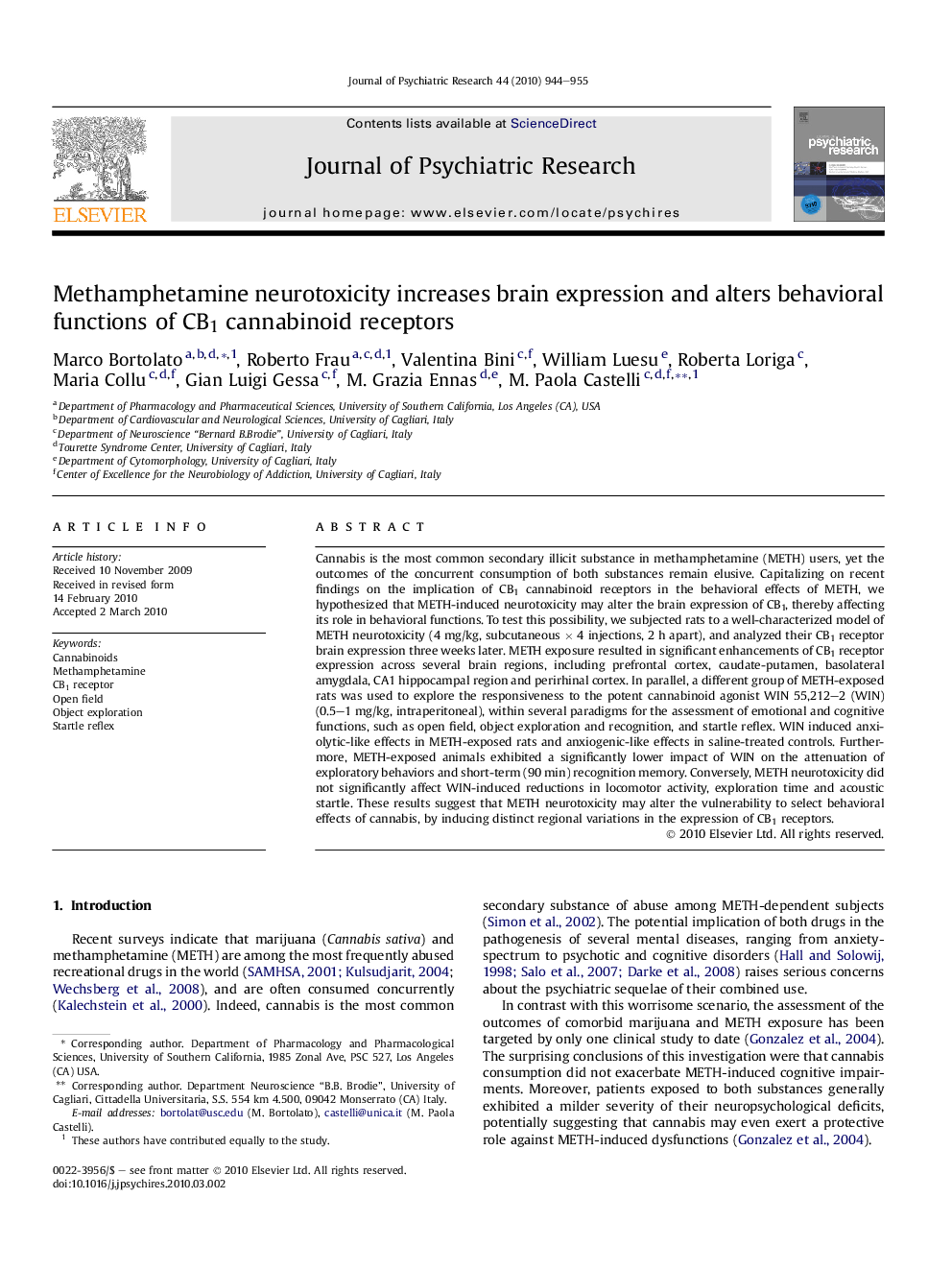| Article ID | Journal | Published Year | Pages | File Type |
|---|---|---|---|---|
| 327766 | Journal of Psychiatric Research | 2010 | 12 Pages |
Cannabis is the most common secondary illicit substance in methamphetamine (METH) users, yet the outcomes of the concurrent consumption of both substances remain elusive. Capitalizing on recent findings on the implication of CB1 cannabinoid receptors in the behavioral effects of METH, we hypothesized that METH-induced neurotoxicity may alter the brain expression of CB1, thereby affecting its role in behavioral functions. To test this possibility, we subjected rats to a well-characterized model of METH neurotoxicity (4 mg/kg, subcutaneous × 4 injections, 2 h apart), and analyzed their CB1 receptor brain expression three weeks later. METH exposure resulted in significant enhancements of CB1 receptor expression across several brain regions, including prefrontal cortex, caudate-putamen, basolateral amygdala, CA1 hippocampal region and perirhinal cortex. In parallel, a different group of METH-exposed rats was used to explore the responsiveness to the potent cannabinoid agonist WIN 55,212–2 (WIN) (0.5–1 mg/kg, intraperitoneal), within several paradigms for the assessment of emotional and cognitive functions, such as open field, object exploration and recognition, and startle reflex. WIN induced anxiolytic-like effects in METH-exposed rats and anxiogenic-like effects in saline-treated controls. Furthermore, METH-exposed animals exhibited a significantly lower impact of WIN on the attenuation of exploratory behaviors and short-term (90 min) recognition memory. Conversely, METH neurotoxicity did not significantly affect WIN-induced reductions in locomotor activity, exploration time and acoustic startle. These results suggest that METH neurotoxicity may alter the vulnerability to select behavioral effects of cannabis, by inducing distinct regional variations in the expression of CB1 receptors.
